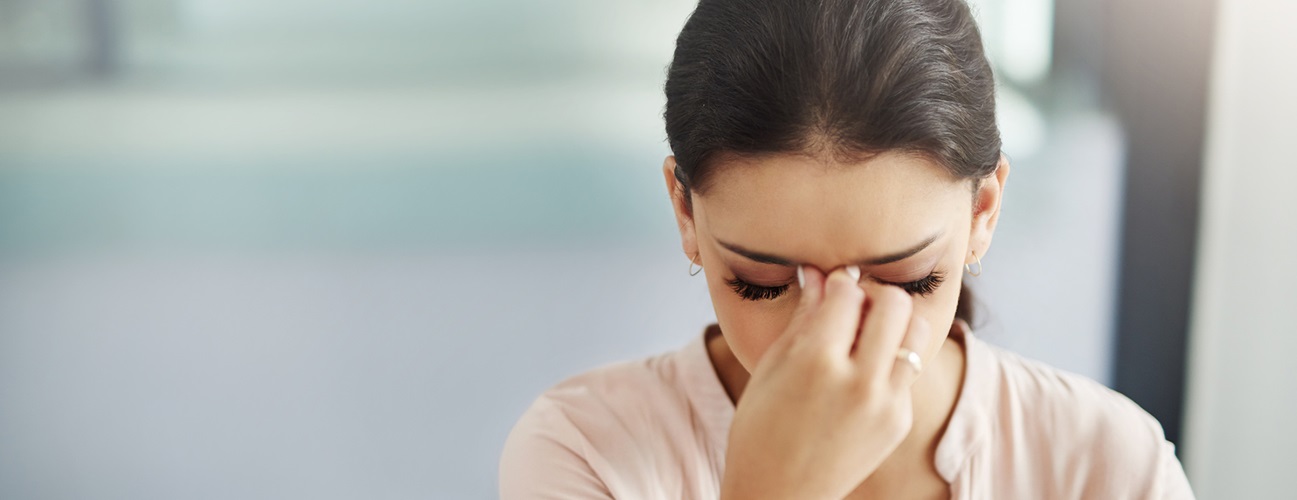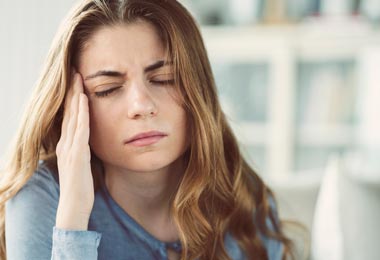Headaches and Women: What Do Hormones Have to Do With It?
A bad headache can ruin your workday, strain your relationship with family members and affect your ability to exercise. In the U.S., headaches cause 112 million sick days each year. While one-third of the population gets headaches, women suffer more than men do.
Changes in hormones could be among the reasons women have more headaches than men do.
These hormone-related headache triggers include:
- menstruation
- taking oral contraceptives
- pregnancy
- lactation
- menopause

Why hormones?
Estrogen is responsible for the development and regulation of the female reproductive system. A headache can be triggered any time there is a fluctuation in estrogen levels, including when there is a dip in estrogen levels around the time of your menstrual cycle. Women may also experience more headaches around the start of menopause and when they undergo hysterectomy.
Menstrual-related Headaches
Pre-pubescent girls and boys get headaches at the same rate. However, they occur more often for girls once they reach puberty and their menstrual cycle begins, and headaches only level off again after menopause.
To see if your menstrual cycle is affecting your headaches, try keeping a calendar to track when your symptoms begin. If you see a pattern, your doctor might be able to offer some preventions and treatment such as:
- starting medications before your monthly menstrual cycle begins to help lessen the headache pain
- taking oral contraception or using hormone replacement therapy, which may benefit some patients but not all
- in some cases, shutting down the menstrual cycle with the help of medication if the pain is extreme
Do I have a migraine or a tension headache?
The most common types of headaches for women are tension headaches and migraines. Tension headaches are commonly described as feeling like a band around the head, but if you’ve ever felt a throbbing and pounding in your head, you may have experienced a migraine headache.
Migraine Headache Symptoms
- typically last four to 72 hours (this includes pre-headache and post-headache symptoms)
- spots or zigzag lines in vision (only among 15–25 percent of headache sufferers)
- pain on one side of the head (15 percent of patients can have pain on both sides)
- pain worsened by physical activity
- sensitivity to light, sound or smell
- nausea and/or vomiting (patients with tension type headaches typically do not have nausea)
Lifestyle Treatment Options
You may need to consider lifestyle changes to help manage your migraine headache symptoms. Avoid known triggers such as alcohol and stress, and be sure to hydrate, hydrate, hydrate! (You should drink 1.5 to 2 liters of water each day.) If your caffeine consumption is affecting your sleep patterns, limit excessive coffee and energy drinks. Lastly, sleep – both quality and quantity are extremely important for a healthy, migraine-free life. The key is to stay consistent with your sleep, wake-up and meal times.
Physical therapy, especially around the neck and shoulders, can be extremely useful in easing muscle stiffness that could cause a tension headache. Behavioral therapy and relaxation training can also help with stress reduction to treat headaches.
If lifestyle modification measures fail, see your doctor.
Migraine as well as tension headaches can be managed, allowing you to enjoy your everyday activities. Understanding how hormones affect you and how they can cause migraines or headaches is the first step to finding treatment options that work for you.





